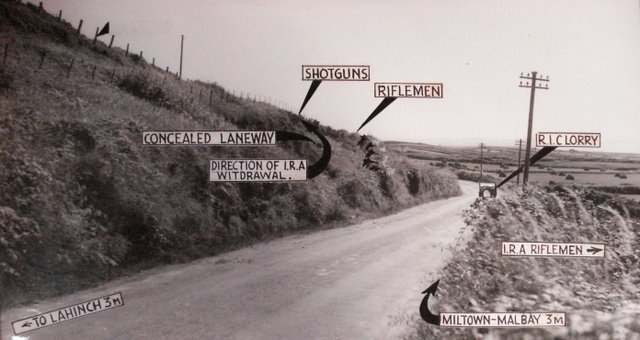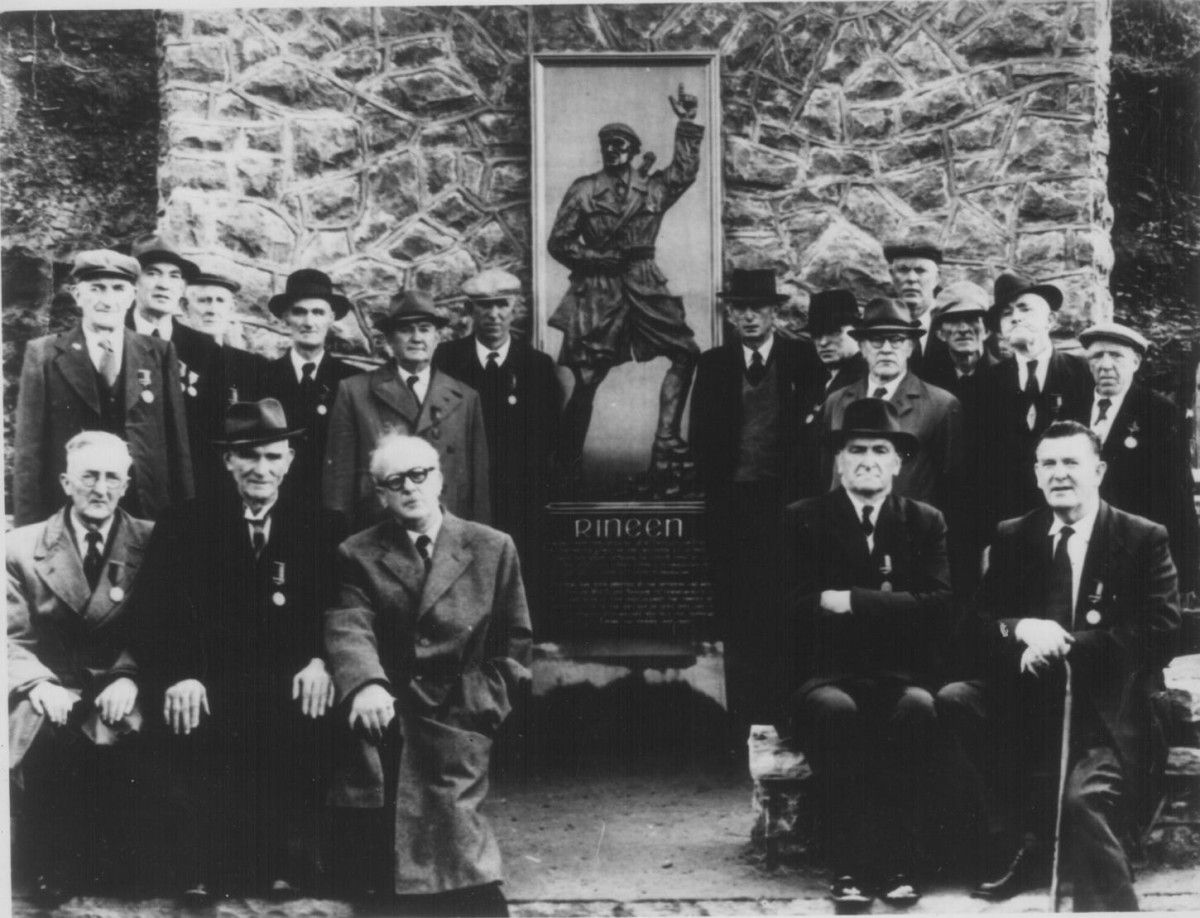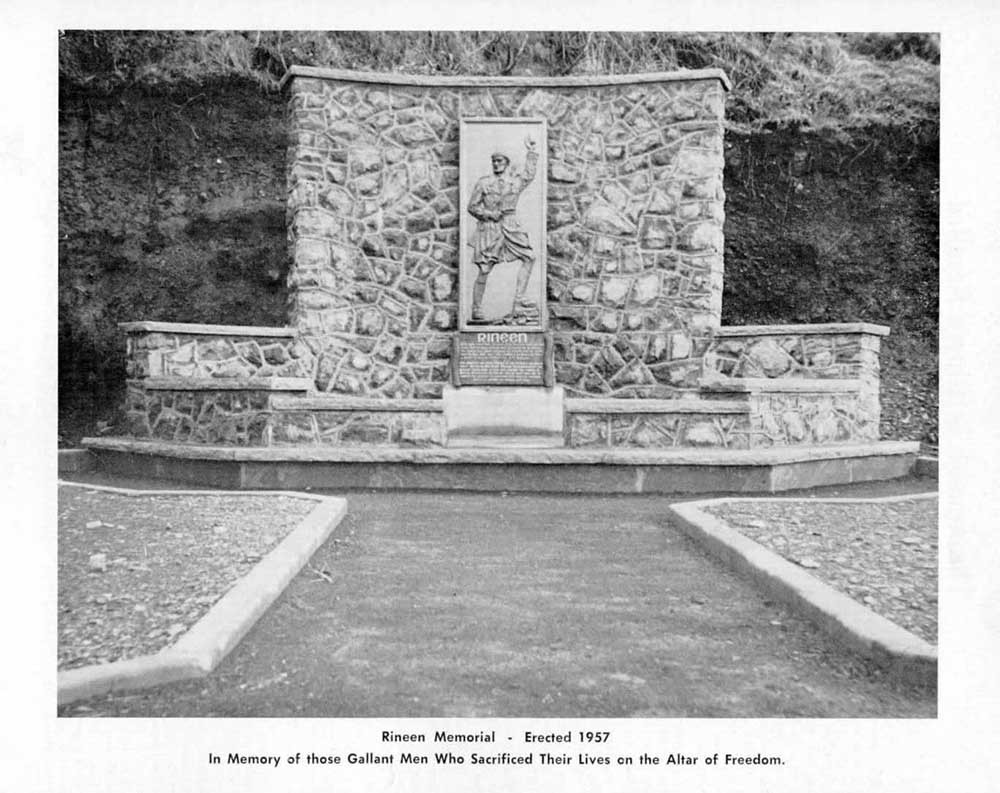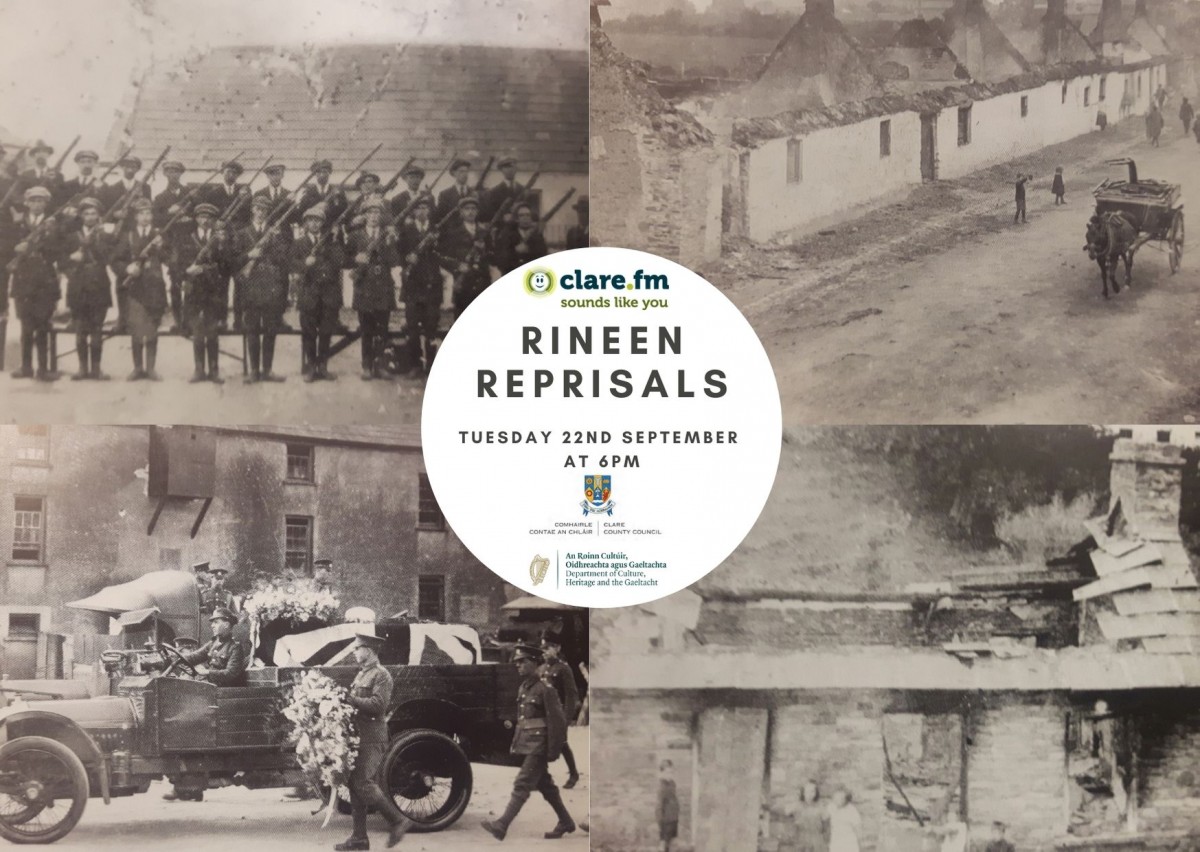
Today, Tuesday September 22nd, marks the 100th anniversary of the most significant event in the War of Independence in Clare, The Rineen Ambush at Drummin Hill on the main Lahinch to Miltown Road.
In the early morning of 22nd September 1920 units of the 4th Battalion Mid Clare Brigade mobilised at Moy Chapel. Commanded by Ignatius O’Neill they moved off at 4:00am, met further companies at Ballyvaskin and went cross country to the planned position at Rineen.
O’Neill wasn’t to know that his plans for the ambush were to be thrown into disarray by two events that were to have a major bearing on activities at Rineen. In an unrelated incident that day was the shooting of Acting Resident Magistrate Captain Alan Lendrum at a level crossing at Caherfeenick near Doonbeg by members of the West Clare Brigade.
He was on his way from Kilkee to attend the Petty Sessions at Ennistymon Courthouse. The search for Lendrum, who had been earlier reported missing after his non arrival, had led to an increase of Crown Forces activity in the Mid Clare area. The second event concerned the R.I.C. Crossley Tender.

As the lorry was on its way a wrong signal was given by the scouts, ‘Police car coming’ was taken up as ‘three cars coming’. An order by O’Neill was issued to hold fire and the tender was allowed to pass on its way to Miltown Malbay. O’Neill dispatched John Clune, a Volunteer from Inagh, to cycle to Miltown Malbay to watch the tender and report on its activities.
Clune returned two hours later as the Battalion lay in position. He informed O’Neill that the Crossley Tender was outside the R.I.C. barrack facing for Ennistymon and was about to return. Shortly before 3.00pm the lorry began its final journey to Drummin Hill.
With grenades thrown, rifle and gunshot fired by the Volunteers the attack was over in a matter of seconds. Five Royal Irish Constables and a Black and Tan were dead, with their rifles, revolvers and ammunition captured. As the Crossley Tender burnt, the peace was short lived as a lorry of Crown Forces searching for Lendrum was heard approaching from Lahinch and came upon the scene.
Dismounting, the military opened machine gun fire on the withdrawing I.R.A. and an intense rear-guard action was fought as the 4th Battalion dispersed returning fire through the low fields behind Drummin Hill. O’Neill and Vol. Micklo Curtin were wounded, the only I.R.A. causalities.
The resultant aftermath of the ambush led to immediate brutal reprisals and indiscriminate atrocities by the British Army, R.I.C. and Black and Tans. They terrorised the local population in Miltown Malbay, Lahinch, Ennistymon and the surrounding countryside with the murder of civilians and the destruction, burning and looting of private and public houses and shops.
The long night of rampage and violence left five civilians and one I.R.A. Volunteer dead. In the Irish Independent of September 27th 1920 the total damages to property were estimated at more than £100,000.

At the time the Rineen Ambush was the largest and most successful military action against Crown Forces during the war. It was the first time a large I.R.A. unit had waited for a lengthy period in position for the enemy and had wiped out an entire armed patrol. Though overshadowed by later ambushes, notably the Kilmichael Ambush in West Cork, there is no denying this attack was a victory for the Volunteers of the 4th Battalion, Mid Clare Brigade.
In adherence with the current public health advice regarding gatherings and guidelines relating to the Covid-19 pandemic a commemoration will not go ahead this Tuesday but we will commemorate at a suitable time when the vast number of family members and people with interest can safely travel to remember the sacrifices of the men of Rineen.
For further information please visit here or Facebook page.
